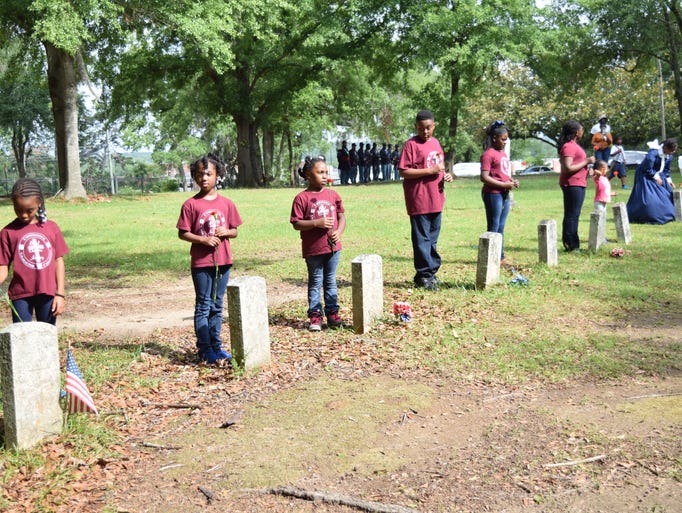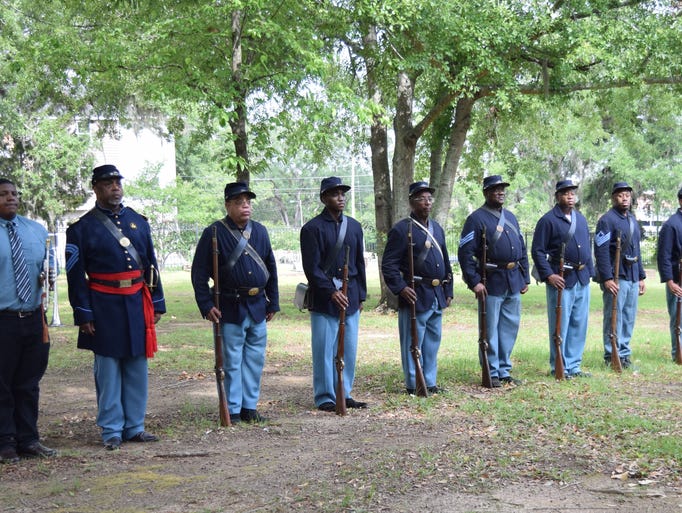African American soldiers faced trials and tribulations during the Civil War. But the struggle did not end there.
Source: From Civil War Journeys; original source was not identified
There was much animus towards southern African Americans among white southerners after the Civil War. Something as simple as an African American’s pride in his military service could become a flashpoint for violence. Consider this case, from post-war Virginia:
Freedmen’s Bureau Agent at Brentsville, Virginia, to the Freedmen’s Bureau Superintendent of the 10th District of Virginia
Prince Wm Co. Va Brentsville Jan’y. 15″ 1866.
Sir: I have the honor to inform you that a dastardly outrage was committed in this place yesterday, (Sunday,) within sight of my office, the circumstances of which are as follows.
A freedman named James Cook was conceived to be “impudent,” by a white man named John Cornwell; whereupon the whiteman cursed him and threatened him. The freedman, being alarmed, started away, and was followed and threatened with “you d——d black yankee son of a b——h I will kill you”; and was fired upon with a pistol, the ball passing through his clothes. He was then caught by the white man, and beaten with the but of a revolver, and dragged to the door of the Jail near where the affair occurred, where he was loosened and escaped.
He came to me soon after, bleeding from a deep cut over the eye, and reported the above, which was substantiated to me as fact by several witnesses. I have heard both sides of the case fully, and the only charge that is brought against the freedman is “impudence”; and while being pounced upon as a “d——d Yankee,” and cursed and called all manner of names, this “impudence” consisted in the sole offense of saying, that he had been in the union army and was proud of it. No other “impudence” was charged against him.
I know the freedman well, and know him to be uncommonly intelligent, inoffensive, and respectful. He is an old grey-headed man, and has been a slave of the commonwealth attorney of this co. a long time. He has the reputation I have given him among the citizens here, and has rented a farm near here for the coming season. As an evidence of his pacific disposition, he had a revolver which was sold him by the Government, on his discharge from the army, which he did not draw, or threaten to use during the assault; choosing, in this instance at least, to suffer wrong rather than to do wrong.
To show you the state of feeling here among many people, (not all) in regard to such a transaction, Dr. C. H. Lambert, the practicing physician of this place, followed the freedman to me, and said, that “Subdued and miserable as we are, we will not allow niggers to come among us and brag about having been in the yankee army. It is as much as we can do to tolerate it in white men.” He thought “It would be a good lesson to the niggers” &c. &c. I have heard many similar, and some more violent remarks, on this, and other subjects connected with the freedmen.
I would not convey the impression however, that there is the slightest danger to any white man, from these vile and cowardly devils. But where there are enough of them together, they glory in the conquest of a “nigger.” They hold an insane malice against the freedman, from which he must be protected, or he is worse off than when he was a slave.
Marcus. S. Hopkins.
And this is certainly related to the above: These are the only monuments to African American Union soldiers that were installed below the Mason-Dixon Line prior to 1990 (the movie Glory was released 1989):

Colored Soldiers Monument, Kentucky

Monument to the 56th USCT Infantry, Missouri

Monument to the Colored Union Soldiers, North Carolina

West Point Monument, Norfolk, Virginia

Civil War Monument at Lincoln Cemetery in Portsmouth, Virginia
Source for photographs: see here.
Three monuments are in former Confederate states, two are in Border (Union slave) states. By contrast there are hundreds of monuments to Confederate soldiers spread throughout the former Confederate and Border states by 1990. Note that the two Virginia monuments are in African American cemeteries. Continue reading


 Civil War historical re-enactor David Flemming, right, stands by a bronze sculpture honoring black soldiers who served in Key West, FL. The dedication ceremony took pace on February 16, 2016.
Civil War historical re-enactor David Flemming, right, stands by a bronze sculpture honoring black soldiers who served in Key West, FL. The dedication ceremony took pace on February 16, 2016. 






![[IMG]](https://i0.wp.com/upload.wikimedia.org/wikipedia/commons/4/42/Emancipation_Memorial.jpg)
![[IMG]](https://i0.wp.com/DBWiegers.zenfolio.com/img/s4/v11/p191993827-2.jpg)



